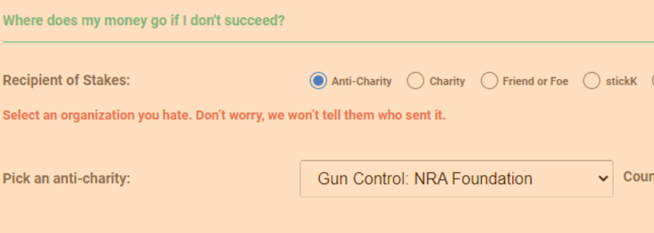Ever have one of those days where you just stare at a screen, give up, and then waste away your time on mindless internet drivel?
Me too. I’ve had several days like that, sometimes strung together as if I’m reliving the same crappy movie over and over.
It’s understandable if this happens to you. The world has seen its share of chaos and nonsense this past year, and good luck trying to disconnect from it all. It reminds me of Nike’s old slogan, Just do it — easy to preach but hard to follow.
Still, we have bills to pay and dreams to pursue. Let’s not forget about our sanity, which seems to whither as we lose ourselves to an existence of constant distraction and low-grade anxiety. To be our best, to be ourselves, we need a sense of purpose. To fulfill that purpose, we must first motivate ourselves to take action.
But what do you do when you’re not feeling motivated? You can fake it, sure, but that’ll exhaust you before you see any real gains.
Productivity hacks? You already know those don’t work. Any trick that pits you against your natural inertia will fail. Like pushing a boulder uphill, you’ll run out of steam in short order.
You don’t need hacks when you’re mentally engaged. Nor do you need to psyche yourself up. You merely need to set the right conditions so that motivation develops organically.
These three strategies have proven most useful to me during times where focus, drive, and action have taken a back seat to inertia.
Create the two conditions for urgency
Remember those days in school where your teacher gave you a week to write a term paper? You’d dawdle for six days, procrastinate, and then pull an all-nighter to get it done on time.
The urgency of a deadline and the consequences of a failing grade pushed you into high gear.
A deadline and negative consequences comprise the two essential components of urgency — the most effective way to motivate yourself. The hand-wringing sense of urgency compels us to tune out the noise and zero in on what’s most important.
An arbitrary deadline by itself won’t create that feeling. If you’ve tried it, you know what I mean. Without a penalty, the threat of a deadline does nothing to spur you to action. Contrast that with a boss who gives you an assignment and says, “Complete this by Friday or you’re fired.”
That’s a consequence with teeth. No matter how boring or pointless the assignment, you’ll motivate yourself to get it done because you want to keep your paycheck.
Since we often lack real consequences for not doing our work, we need to manufacture a penalty. That’s harder than it sounds. I’ve tried accountability partners but never achieved sustained success.
My personal favorite strategy involves giving to a charity I despise if I don’t meet my deadline. There are companies set up to help you do this. Check out the website Stickk. You make a commitment and put money on the line by pledging it to a charity you hate (anti-charity) if you fail to achieve your objective.

Screenshot: stickk.com
Focus on micro-goals
Motivation often wanes when our goals overwhelm us. We check out and seek an escape route through mindless distractions or creative excuses to justify why we quit.
To counteract overwhelm, create micro-goals — an objective you can complete in thirty minutes or less.
When I sit down to write and find myself in a daze, I focus on these super short-term objectives to get myself in a groove. Here are some examples:
- Write 67 words in the next 12 minutes.
- Generate three business ideas that don’t include any of the following words: thing, stuff, product, app.
Notice how I stay away from round numbers in the first example. For the second one, I gave myself a constraint. Constraints force you to focus by narrowing the range of possibilities. It’s the single best mental shortcut to enhance your creativity and concentration.
Micro-goals work because they’re quick, engaging, and unusual. Those short bursts of activity often gin up enough motivation to get you into the flow of an activity. To make them work for you, follow these rules:
- Create urgency by limiting the time limit to 30 minutes.
- Keep them interesting with unusual targets.
- Make them challenging by giving yourself a constraint.
Surround yourself with step-up peers
A step-up peer is someone with similar goals as you but slightly above you in skill and accomplishments.
If you’re an up-and-coming artist and you’re comparing yourself to an established celebrity, you’ll likely find yourself discouraged at the long hill you need to climb to reach your goal. That kind of discouragement can stifle your motivation.
But if you focus on a peer, someone just a step ahead of you on the path to success, you’ll find it rouses your ambition because you see their accomplishments as a target you can realistically achieve.
It also sparks your competitive drive when you picture your step-up peers as a pack of runners in a close race. Imagine yourself in second place, trailing by a half-step with a few hundred yards to go. With victory in reach, you’ll find that extra burst of energy to catch up. Compare that to a race where you’re dead last fifty feet from the finish line.
It takes careful planning to create this sort of group, but when done right, it proves beneficial for all involved as you keep motivating each other to push ahead.
All you need to know
For a lucky few, motivation comes naturally. For everyone else, there’s no need to buy into absurd productivity hacks that yield marginal results at best.
No matter how easily distracted or constrained by apathy, these three techniques allow anyone to motivate themselves into a productive state.
- Create urgency by setting a deadline with consequences
- Focus on micro-goals
- Surround yourself with step-up peers

Barry Davret writes about life, relationships, and lessons on growing older. His words are in Forge by Medium, Elemental by Medium, Business Insider, and more.
Image courtesy of Andrea Piacquadio.












